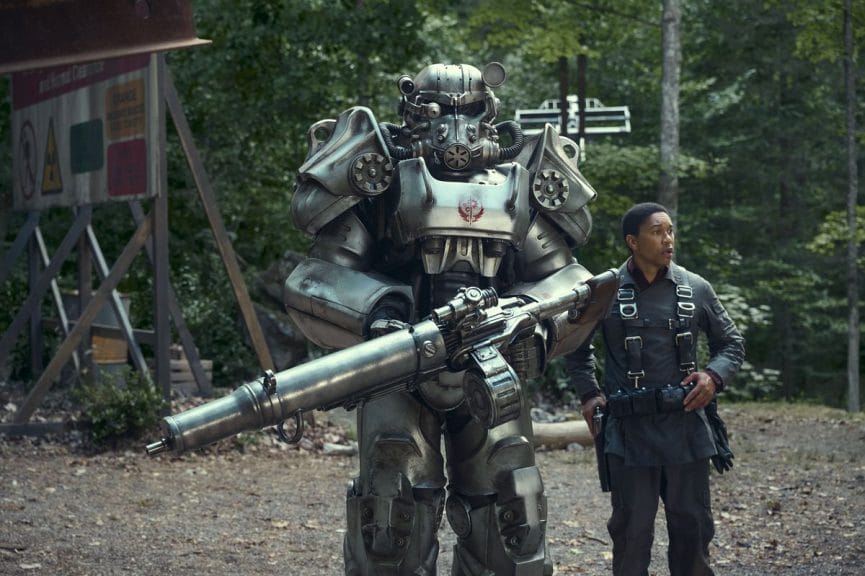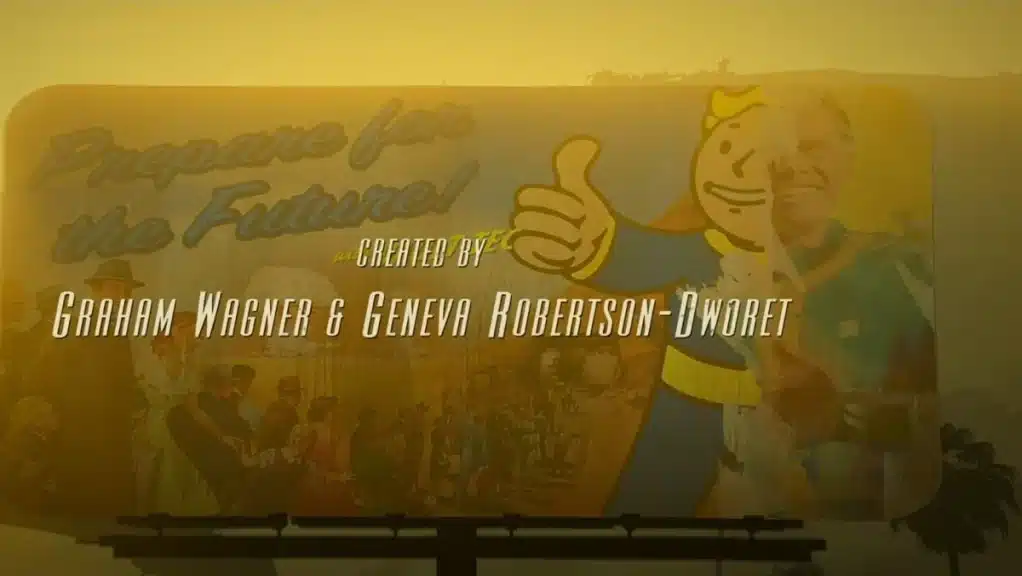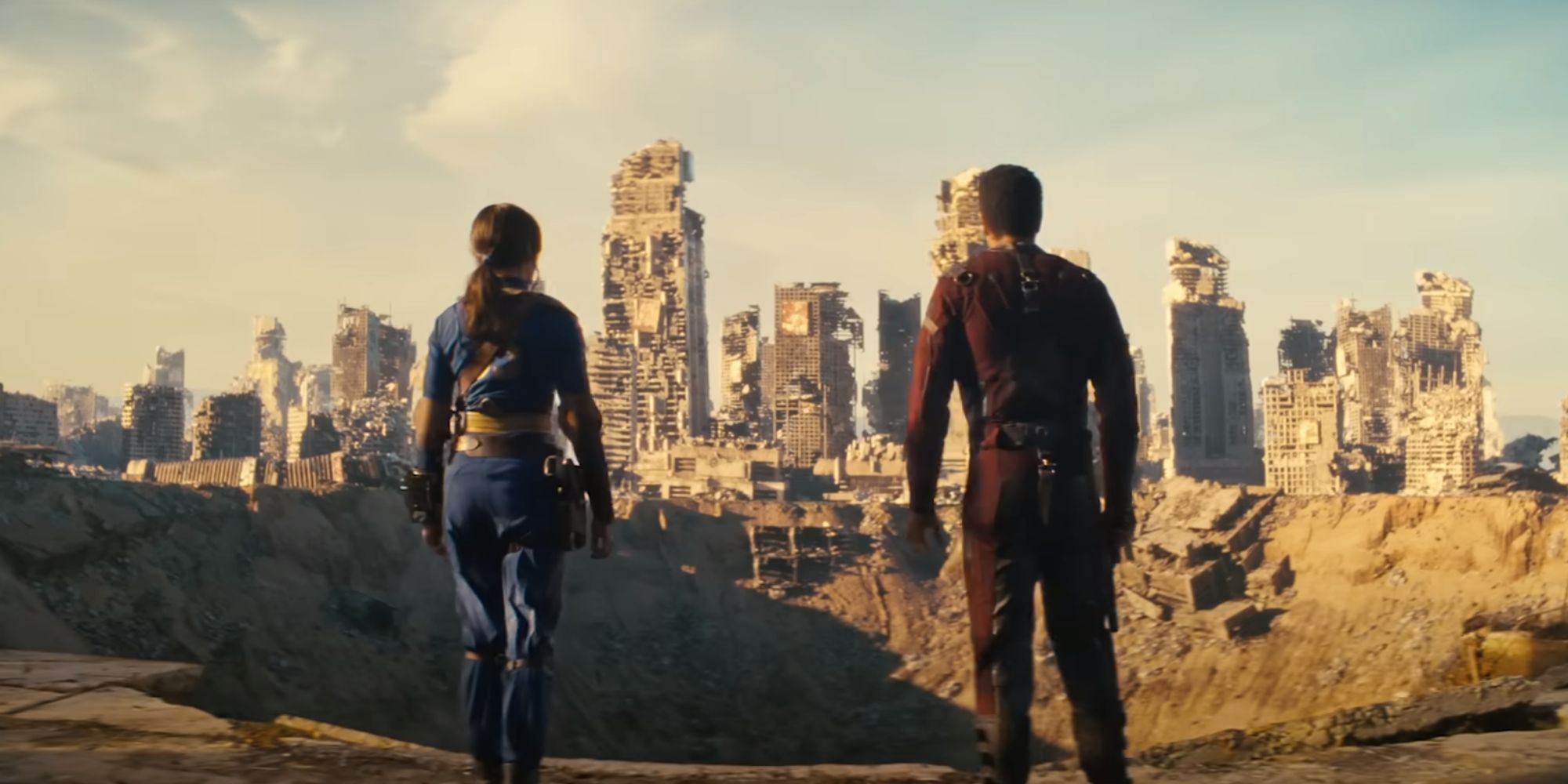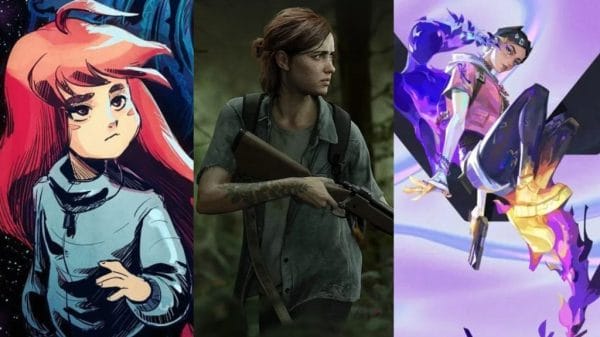Nearly every gamer has heard of the Fallout series, or at least its post-apocalypse narrative. The concepts of the post-nuclear war setting and its robots and massive underground vaults are known to many. Fallout serves as the standard nuclear apocalypse world while still creating unique concepts, such as the various factions across each game that are each flawed and nuanced and its retro-futuristic aesthetic.
The gaming companies Bethesda Softworks (known for the Elder Scrolls series) and Obsidian Entertainment (known for Neverwinter Nights and Pillars of Eternity) have made the most popular Fallout games. Obsidian created Fallout: New Vegas, arguably the most popular and beloved game of the series. Meanwhile Bethesda made the famous but flawed Fallout 3 and 4, and currently owns the Fallout series. Amazon Prime Video’s recent show, another recent live action adaptation of existing media, is partnered with Bethesda. The show’s events are considered part of the series’ timeline, or canon, though this has been met with backlash.
“Fallout” is based around three primary characters’ stories. The Ghoul, a former Hollywood cowboy named Cooper Howard, is a bounty hunter surviving 200 years after the bombs dropped. Lucy MacLean is a naive vault dweller learning how life evolved on the surface without the structure of the vaults. Maximus is a squire-turned-knight of the Brotherhood of Steel, trying to rise through the ranks while grappling with his own mistakes.
How does the show handle these characters, and how well does it serve a story within the Fallout universe?
Effects and Appearance

The costumes and effects are incredible to see in action. Everything from the items like Stimpacks and supplies to large robots like Mr Handy and the Brotherhood of Steel’s power armor look and sound straight out of the games. Nothing looks overly fake or edited, it looks natural to the world. The effects of explosions and bullet wounds are also extremely realistic and impressive.
There are many fantastic Easter Eggs for old and new fans alike, such as the hacking mini game to access terminal computers. The show’s cinematography is also enjoyable. Interesting camera angles and framing of shots make viewers audibly notice how impressive it is. This dramatic attention matches The Ghoul’s Hollywood character, who shapes many of these cinematic moments. This becomes less frequent halfway through the show, but is enticing in the first few episodes. The show’s title cards and ending credits animations are also very visually appealing and include hints about the upcoming episodes. A prime example of this is a billboard split between the cartoonish Vault boy and Cooper Howard doing the thumbs-up pose, showing the recent reveal.

The tone of the Fallout games is hard to nail down. Everything from the dialogue to mechanics are fixed on dark humor based on the nuclear apocalypse that killed over 90% of people on Earth. Yet the games’ socioeconomic and political commentary is also key to their popularity and message. Their humor keeps the truly dark plot from becoming too heavy for the player, and overall, the show matched this incredibly well. This fell off slightly around halfway through the show, as many of the jokes stopped landing right and were forced, but it was fantastic to see initially.
Characters

The three main characters in “Fallout” have incredible concepts behind them. The Ghoul is instantly moving and loveable, and his cheesy one-liners and mannerisms are perfect to suit his former Hollywood charm. He fits the tone of the universe well, being fun and dramatic while unable to be separated from his emotionally-charged and nuanced backstory.
Lucy is also a compelling protagonist, capturing the main-character feel of the games without feeling flat. The idea of an innocent yet capable Vaultdweller unable to do lethal damage for most of the season is fascinating. It makes narrative sense that Lucy goes through the arc of “hardening” to the world around her and learns to kill, and this results in great shots and battle scenes. However, this development reverts at the beginning of each episode, and she goes through this cycle four or five times in a row. Even in the final episode, she is quiet and indecisive, despite everything she’s gone through.
Maximus unfortunately falls short compared to the other main characters. He barely talks, particularly during his introductory scenes, so it is impossible to gauge a consistent personality from him, much less a motivation or any real thoughts. His backstory is simply the same two or three frames of him as a child that are repeated every episode, yet it is never actually explained whether he hates the Brotherhood or not. Initially his story appears to be one of revenge where Maximus steals the power armor and revolts against the Brotherhood, going down a morally gray or even evil path, which would have been compelling, especially as he interacts with Lucy.
However, he doubles back on this path in a lackluster fashion. Maximus befriends his former bully Thaddeus and later parts ways with him after confessing his actions. This argument is predictable word-for-word, movement-for-movement, and is painfully cliche and emotionally flat. Yet this fight does not push Maximus to be evil, but good, in a way that does not feel like an interesting development of his character, but simply does not make sense. Later, after only briefly interacting with Lucy, he abandons his power armor with barely a second thought to become her still-quiet sidekick. Maximus’ character is dull and inconsistent, which is disappointing after seeing his potential.
Plot
“Fallout” does a fantastic job at showing what life was like before the bombs fell, which is something the player never knew through the games. These flashback sections show how corporations like Vault-Tec came to power, how the vaults and Pip-Boys were advertised, and how strongly nuclear paranoia consumed the American population.
Shown from Cooper Howard’s perspective, they add emotional weight to his character while giving greater explanation for symbols seen throughout the games. The main example of this is the iconic thumbs-up pose, which the cowboy uses to explain nuclear bomb clouds to his daughter and later when modeling the first Vault-Tec jumpsuits. This fantastic additional information and history interests viewers while also breaking up the future sections after the bombs.

These historical sections are increasingly valuable as the post-apocalypse sections lose urgency and quality in plot. Through the first four episodes, the momentum slows as characters are repeatedly stalled, but interest interactions from the side missions result in this being barely noticeable. However, in episode five, the plot skids to a halt entirely. Lucy and Maximus spend an entire episode in Vault 4, which does not change anything for the plot or characters beyond fully reducing Maximus’ character to a somehow naive sidekick, despite his violent past. This episode confirms that human experiments are happening in the vaults, but this was already revealed through the subplot with Lucy’s brother Norman. Even in Norman’s plot, it is never fully clarified what was happening in Vaults 31, 32, and 33, despite many hints being given.
The perfectly balanced tone and cinematography is lost around episode five as well, and the plot and dialogue devolve into cliches by the finale. This loss of momentum and emotional meaning leaves viewers disappointed, especially compared to the genuinely impressive writing and effects in the first half of the show.
War Over the Canon

Many fans are upset over the changing of the Fallout story through the show, but these changes are visible and disruptive even to non-fans. The concept of ghouls is changed: ghouls are not a somewhat rare occurrence resulting from prolonged exposure to radiation, like The Ghoul’s character. Now anyone can become a ghoul by taking a simple potion from a random doctor. Characters like Moldaver can survive the nuclear apocalypse and 200 years afterwards without being in a vault, or even appearing like a ghoul, without explanation. This changing of what these rare creatures are removes the threat of death, as ghouls can handle greater injury without dying, and reduces the impact of the literal nuclear apocalypse. This breaks the suspension of disbelief of the story for viewers, including those who don’t know what ghouls originally were.
Another moment of broken suspension of disbelief is the reveal that Hank MacLean, the overseer of Vault 33, had access to nuclear bombs and destroyed the city of Shady Sands in an act of pettiness against his wife and the New California Republic. It makes little sense that a man who was not high-ranking in Vault-Tec was able to magically access nuclear bombs in the post-apocalypse, and it feels pointed that he targeted a popular city from Fallout: New Vegas.

Obsidian Games was the company that produced Fallout: New Vegas, and the series was later bought by Bethesda, though both companies are currently owned by Microsoft. For fans who know this, a new layer is added to the show. From the nuking of Shady Sands to the final battle killing the possible last remains of the New California Republic, a major faction in Fallout: New Vegas, it feels like anything from Obsidian has a target locked onto it. This is most evident in the last frame of the finale, as the camera pans to the city of New Vegas itself, its iconic neon lights dark and half of it appearing destroyed. The ending credits go into detail of that destruction, nearly mirroring the game’s introductory scene. Such a pivotal location of the entire Fallout series being nearly wiped out, particularly off-camera, was immediately noticed by fans and led to online outrage. While these things are largely only noticed by fans, even for new viewers it is strange to introduce new cities and organizations only to be killed.
Overall, is the show worth a watch? For fans, it is a fantastic way to see what life was like Pre-War, and examine interesting character concepts. However, through the fumbling of character development and destruction of beloved locations and groups, the show leaves a bad taste in the mouth by its end.
Even for new viewers who know nothing about the Fallout universe, the show’s dip in quality only halfway through results in disappointment. Stakes are raised and lowered on a whim, with the threat of death being removed and replaced at any given time. The cliche dialogue and the plot that gets bored with itself on an only eight-episode show end up being painful to watch.
Despite this, it is still visually appealing to the end, though not as exceptionally so as in the beginning, and it leads to interesting questions with its ending for what could happen next. For these reasons, the show is still worth watching for fans and newcomers alike, but viewers should not expect a consistent level of quality the whole way through.
“Fallout” has not yet been renewed for a second season, but its cliffhanger ending and ongoing plot threads indicate one is likely. “Fallout” is available to watch on Amazon Prime Video.














